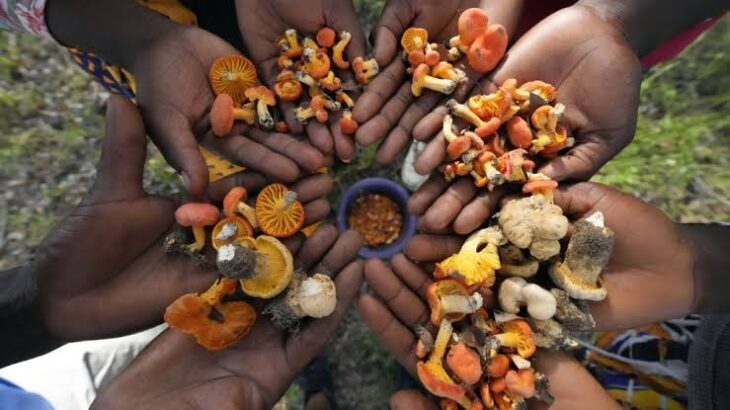The rainy season in Zimbabwe offers a bounty of wild mushrooms, which many rural families eat and sell to increase their livelihoods. Yet, the bounty is not without peril. There are instances of people passing away after eating deadly mushrooms every year. Our next article examines how indigenous knowledge has been passed down through generations regarding how to distinguish between safe and dangerous mushrooms. Look at these women running to meet a truck that is passing them on the Harare to Boulevard Highway. They want to persuade the drivers to buy the colourful wild mushrooms that are the harvest’s fruits. Rainy season brings about the appearance of fungi from the protein-, antioxidant-, and fiber-rich damp soil. In Zimbabwe, wild mushrooms are a highly appreciated delicacy and source of money.
Many residents struggle to find food and formal employment, so they enter the jungle to harvest them in order to supplement their income, but they must do so while it is dark. to stay away from thelandowners who wouldn’t want them there. While there are several species of mushrooms, some, including portobello, shiitake, and the ubiquitous button mushroom seen in supermarkets, are entirely fine to eat. However a lot of wild mushrooms can irritate your stomach, give you allergies, or even be deadly enough to kill you. Differentiating between deadly and edible mushrooms is exceedingly challenging. To determine which ones are safe to consume, one needs to have specialised knowledge and expertise. Anyone without training shouldn’t try to collect mushrooms for any type of human consumption.
Expertise and training are transmitted through the generations in this place, generally from mother to daughter. The family squad arrives early in the morning in preparation for shootouts among trees and dried leaves. They clean their bounty once they have enough and put it in dishes for sale. Women dominate the mushroom trade in Zimbabwe, such as mogobo. Marondera University of Agricultural Science and Technology research indicates. Around one in four women who hunt for wild mushrooms frequently have their daughters with them. Only 1.4 percent of the time did mothers have their sons with them. The government is encouraging small-scale commercial production of some types of mushrooms, like oyster mushrooms, in order to promote safe mushroom consumption and year-round income generation. Nonetheless, it seems that the WildOnes are still the most well-liked.
ALSO READ THIS: Climate Crisis Threatens Everglades

